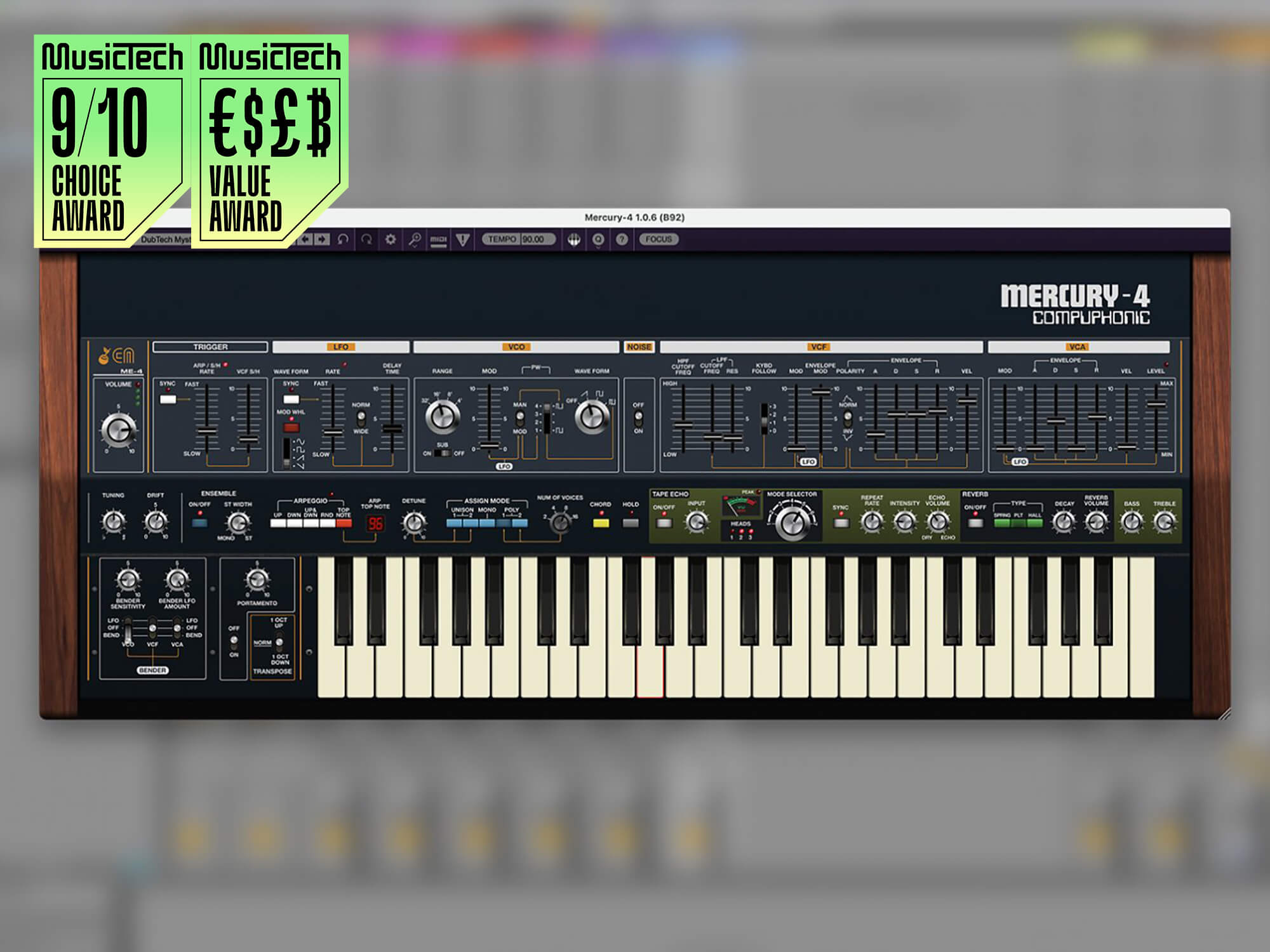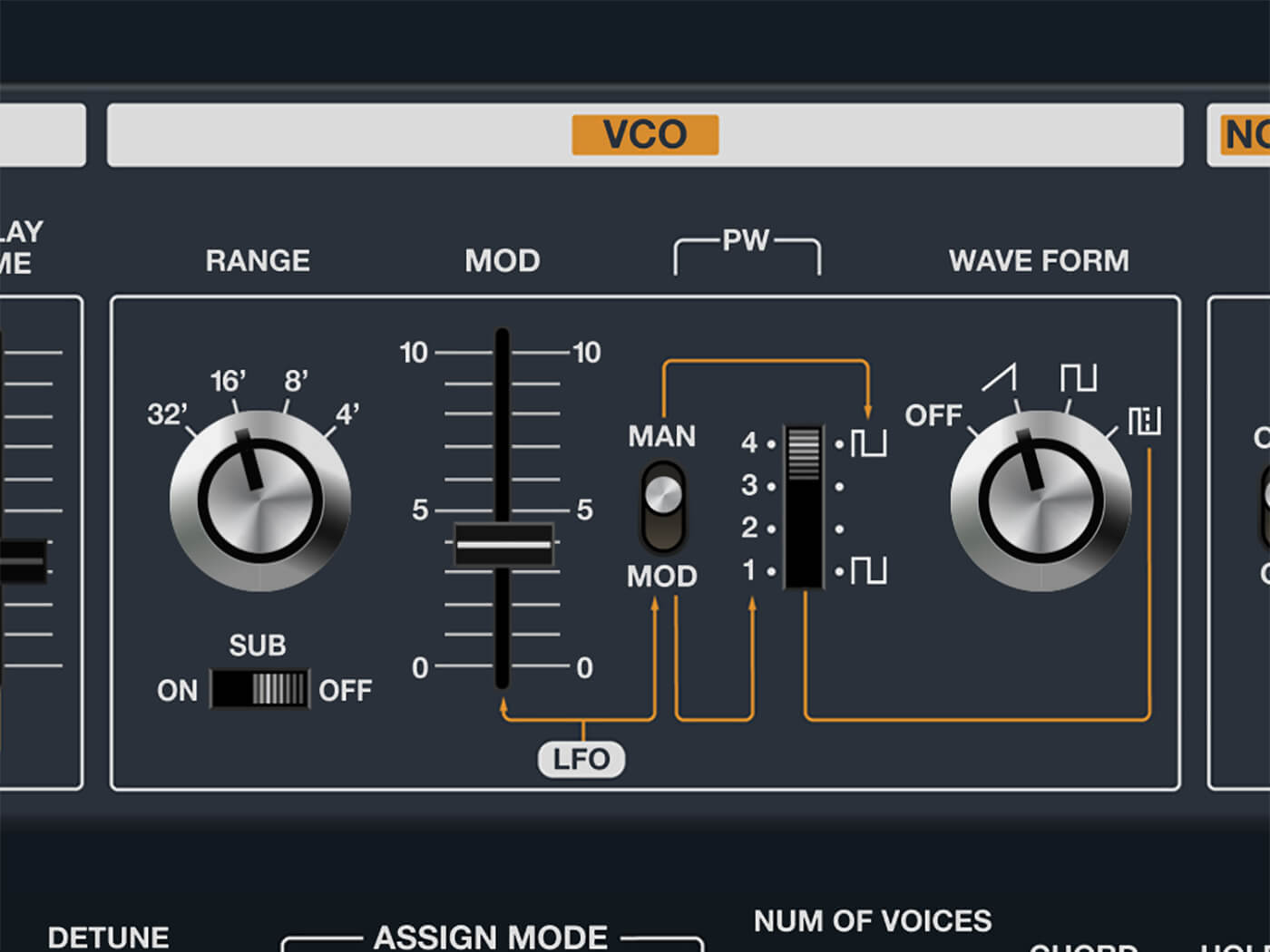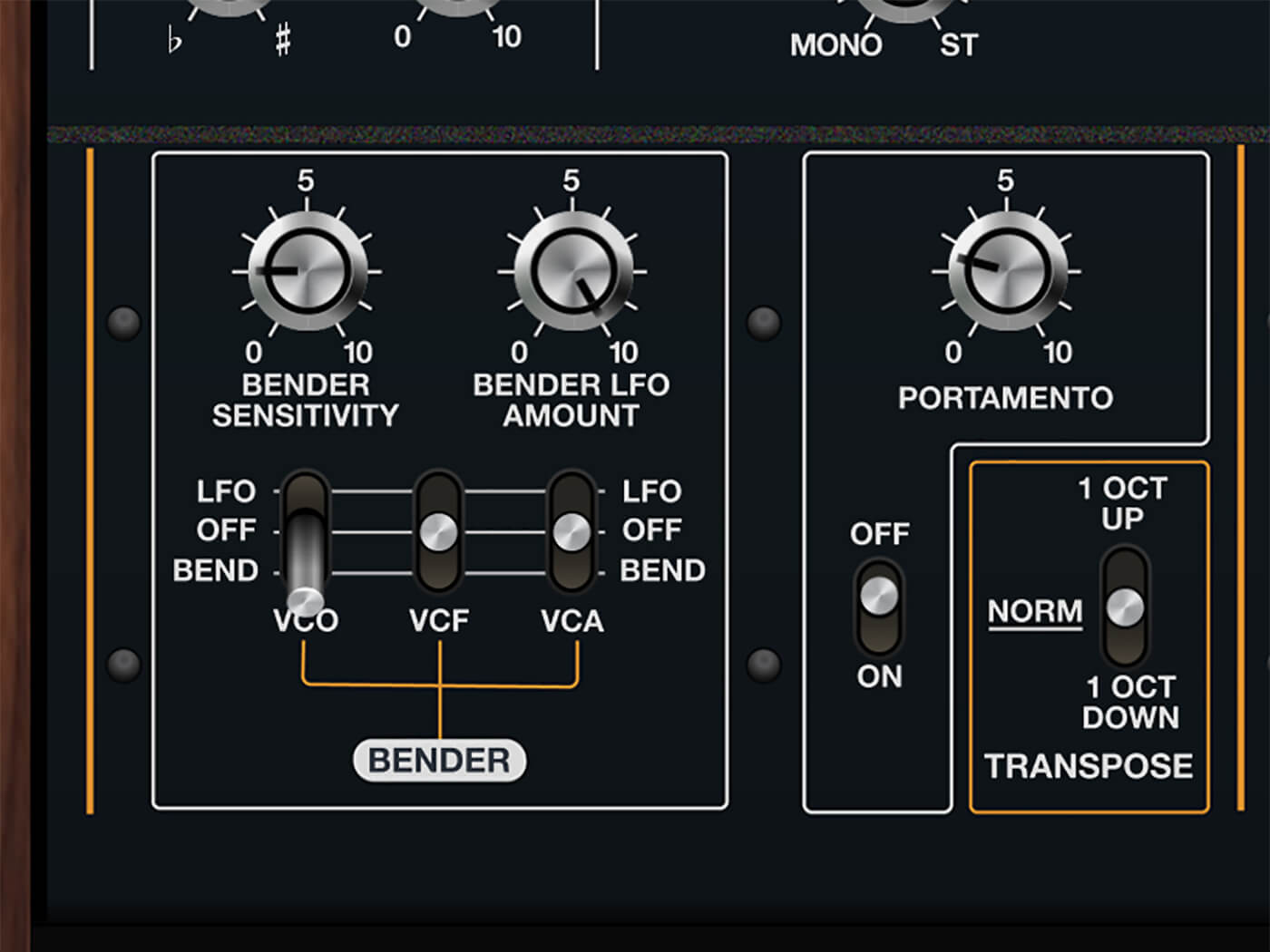Cherry Audio Mercury-4 review: an unusual vintage synth reborn
This versatile and vital-sounding recreation of an unusual classic offers a tremendous amount of bang for your buck.

Review Overview
Our rating
9
Our verdict
⊕ Encourages experimentation
⊕ Covers a lot of sonic territory
⊕ Expands on the original hardware
⊕ Incredible value
⊕ Use it quickly or go more in-depth
Price $39
Contact Cherry Audio
Cherry Audio continues to blaze a trail in recreating legendary synths at affordable prices with the Mercury-4, which comes hot on the heels of Memorymode. This time it’s a recreation and expansion (of course) of the classic Roland Jupiter-4, which appeared on countless pop albums in the late 1970s and 1980s. Even among retro hardware synths it’s a rare model, but happily the developers managed to get hold of and model an original unit owned by Greg Hawkes of new wave band The Cars.
Provided in standalone, VST, AU and AAX formats it’s a remarkably lightweight install at around 10MB per instance. Within the instrument you can authorise the software online and check automatically for updates. Setup is quick and easy, and you can activate MPE MIDI support if required, with a window on the side that can be shown or hidden and used to edit and manage MIDI learn assignments. You can make these efficiently throughout the synth by right-clicking on almost any control and linking hardware elements like dials or faders to MIDI CC values.
The synth layout is pretty faithful to the original but with some handy additions. Everything you need is visible all the time, and menu-diving isn’t required. When this approach is taken in softsynths, it makes them easier to learn and more intuitive to experiment with and navigate. You never fail to understand something because some controls are hidden somewhere. Just like on the hardware, every parameter is there to see.

Sound generation starts with the VCO section. The developers note that the oscillator implementation in the original hardware was a little odd. While its square wave is relatively normal, the sawtooth has a ‘stepped’ wave that changes shape across the frequency spectrum, becoming more coarse as pitch increases. There’s a four-stop Range control, a Sub switch that adds a square wave an octave below the current range selection, and an LFO that adds oscillation that you set up in the LFO section to the left of the VCO section. You can set pulse width manually or to one of four preset depth settings. Master Tuning and Drift knobs allow subtle or extreme changes, with Drift, in particular, bringing a very retro-feeling uncertainty to the pitch when pushed harder.
The synth’s noise section helps add texture to the signal, and then there are VCF and VCA sections for dynamic filtering and sound shaping, adding more movement and envelope shaping to the sound.
While most Roland synths were hard to distort, this wasn’t true of the Jupiter-4. And the developers have faithfully modelled this characteristic. They even suggest using the master volume and VCA level controls to drive the signal, which produces a fearsome and heavyweight biting edge to the sounds.
Another unusual feature among vintage synths is the Trigger section, which lets you set the arpeggio and filter sample/hold rates independently of the LFO rate. You can sync this to master tempo or set it manually to create complex, moving patches. For example, you can have the arpeggio run slowly while the LFO runs fast, modulating pitches, filters and more. The result is akin to the sort of thing you can get from modular systems, more complex than you’d expect from a polysynth but without any of the fiddly patching.

There are several capabilities beyond the original Jupiter in Mercury-4. On a core level, where the original had just four voices of polyphony, this version has up to 16 voices, switchable on the front panel. It also adds velocity sensing, MPE and, of course, infinite patch storage. There’s tons of cool stuff in the effects section as well. The arpeggiator is again unusual in that it doesn’t have an on/off switch – you are either in Arp mode with its various behaviour settings or in Assign mode with its Mono, Poly or Unison settings. The final of these offers variable Detune for a particularly retro feel. The arp also doesn’t have a range control, instead basing its range of movement on which octave on the keyboard you are playing in. It takes some familiarisation but produces some beautifully melodic results. A simple chord button lets you preset a chord pattern of keys, then adapts that pattern to each key you play, making house-style chord melodies easy to create.
As for effects, there’s the ensemble stage from the original, with variable stereo width for an excellent ‘swampy’ sound, and a new tape echo stage with seven modes, three virtual tape heads, and the sync and depth controls you need to add depth and echo tails. It’s easy to conjure up anything from simple doubling to blissed-out dub effects with this. A simple reverb stage and a two-band EQ round out the effects section. Also of note is the Bender section at the bottom left. The original had a joystick but no mod wheel, so you can set up variable amounts of control of VCO, VCA and VCF sections using the bender, which produces interesting creative results.


Cherry Audio’s preset browser lets you navigate the bundled sounds, sorted by category and covering a wide range from thumpy basses through analogue percussion and kicks, searing leads, spacy sequences and even house-style chords and stabs. It’s remarkable how versatile its sounds are. Even by using or tweaking the presets, you can find lush and exciting patches and textures that variously suit everything from techno to pop, sound design, and scoring. It’s a joy to play and experiment with, accessible for less experienced players but with plenty of depth for those who do want to delve deeper. And all this for just $39 makes it something of a steal.
Key Features
- Requires Mac OS 10.9+, Windows 7+
- Requires 64-bit quad-core CPU, 8GB RAM
- Available in VST, VST3, AU, AAX and standalone
- 16-voice polyphony
- MPE support
- Unique original behaviours recreated
- Roland Space Echo FX stage
- Powerful arpeggiator
- Bend section for creative control
- Extensive detune options
- Detailed sound-shaping controls
- Chord mode